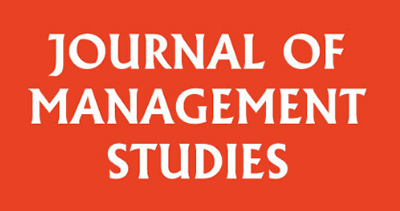
Organizational purpose has recently gained great popularity in management research and practice. An increasing number of organizations have decided to designate a purpose that goes beyond pure profit maximization and aims to contribute to the common good. Even organizations previously known for their strong shareholder and profit orientation have announced their commitment to a higher organizational purpose in recent years. For example, 181 CEOs of the leading US companies signed a statement underlining the need to commit to an organizational purpose that benefits society (Business Roundtable, 2019).
Yet, although business practitioners and scholars praise organizational purpose as a promising approach to more organizational and societal well-being, the emerging research on organizational purpose is not without limitations. Most importantly, there is still no agreement on a definition of organizational purpose. As Henderson (2021) pointed out “[t]here are almost as many definitions of purpose as there are papers about it in the literature” (p. 5481). This lack of concept clarity stands in the way to advance theory consistently and to develop measurement instruments that allow empirical testing of initial theory. Also for practitioners interested in a higher organizational purpose, a clear construct definition and measurement instrument is essential to develop, asses, and manage their own organizational purpose.
Conceptualizing and measuring perceived organizational purpose
The study published in the Journal of Management Studies by Jasinenko and Steuber aims to contribute to these shortcomings. Based on a systematic literature review, the authors argue that organizational purpose should go beyond an organizational aim to contribute to society but should be also experienced and lived out daily by its employees. That means that to grasp the level of organizational purpose, we need to understand how employees perceive it – a construct the authors name “perceived organizational purpose”. We identify four major dimensions from prior literature:
- Contribution represents the employees’ perceptions of the organizational aim to contribute to society positively and to have a higher goal beyond profit maximization.
- Guidance shows how much employees experience the organizational purpose as a guiding principle in their daily actions and complex decision making.
- Inspiration implies how much employees perceive the organizational purpose as a driving force and unifying mechanism in their organizational life. It helps employees to find motivation and inspiration for their work.
- Authenticity shows how much employees perceive the organizational purpose to be truly incorporated in organizational strategies and behaviors. It helps to differentiate purpose from empty marketing claims.
Based on this four-dimensional conceptualization of perceived organizational purpose, the authors develop and validate a survey scale. It measures how employees perceive the organizational purpose based on the four dimensions: Contribution, Guidance, Inspiration, and Authenticity.
Perceived organizational purpose and employees’ well-being
With this scale at hand, the authors find that perceived organizational purpose has a positive relationship with employees’ job satisfaction and general well-being because a higher purpose helps employees to find meaningfulness in their own work. However, the results imply that a high organizational purpose also bears the risk that employees perceive their work as their main source of meaningfulness and therefore neglect their private life, which can have negative effects on their well-being.
How to understand, measure, and manage organizational purpose
Beyond our theoretical contribution to the research on organizational purpose, our findings provide important implications for managerial practice. The four-dimensional conceptualization of perceived organizational purpose could help organizations better understand, develop, and manage their own organizational purpose. It helps organizations to understand that an organizational purpose should go beyond the sole purpose statement (i.e., contribution) but should also be authentic and provide guidance and inspiration to its employees. In turn, practitioners should not only ask themselves how their organization could contribute to the common good but also whether this potential contribution can be authentically incorporated into the organizations, where it would serve as a good inspiration and practical guidance to its stakeholders.
Further, our newly developed and rigorously validated Perceived Organizational Purpose Scale can help managers to assess and report the status quo of perceived organizational purpose and empirically track the changes over time. As most organizations conduct employee surveys regularly, they can implement the new scale in this survey to not only measure the current state of organizational purpose but also its relation to other measured variables, such as job satisfaction or performance.
Additionally, our study provides initial insights on the potential effects of organizational purpose on employees’ job satisfaction and well-being. We find that a highly perceived organizational purpose has mainly a positive effect on well-being and job satisfaction because it helps employees to find meaning in their work. This positive effect on employees could provide great motivation for organizations to invest in purpose. Particularly in the current “war for talent,” organizational purpose could serve as a viable approach to retain good employees for organizations.
However, our findings also show that a highly perceived organizational purpose bears the risk of reducing employees’ well-being because it motivates them to see work as such a strong source of meaning that they neglect other aspects of their lives. Therefore, organizations should be aware of and actively manage the risk of work-life conflict. Organizations could do this by offering systemic measures such as flexible work practices and working hours or other supportive work-life initiatives (Kossek et al., 2010). Davis (2020) proposes that “if we want companies to pursue a higher purpose and to avoid paths that are profitable but morally questionable, let’s give democratic control to those who do the real work” (p. 13). This could help managers understand what employees truly need to balance their personal needs.
Summary video of our paper available here: https://youtu.be/SwsdvWByXmA
References
Business Roundtable (2019). ‘Business roundtable redefines the purpose of a corporation to promote an economy that serves all Americans’. Business Roundtable. Available at https://www.businessroundtable.org/business-roundtable-redefines-the-purpose-of-a-corporation-to-promote-an-economy-that-serves-all-americans
Davis, G. F. (2020). ‘Corporate purpose needs democracy’. Journal of Management Studies, 58(3), 902–913. https://doi.org/10.1111/JOMS.12659
Henderson, R. (2021). ‘Innovation in the 21st century: architectural change, purpose, and the challenges of our time’. Management Science, 67, 5479–88. https://doi.org/10.1287/mnsc.2020.3746
Kossek, E. E., Lewis, S. and Hammer, L. B. (2010). ‘Work-life initiatives and organizational change: overcoming mixed messages to move from the margin to the mainstream’. Human Relations, 63, 3–19. https://doi.org/10.1177/00187 26709 352385
Picture from https://unsplash.com/photos/Ev1XqeVL2wI

0 Comments